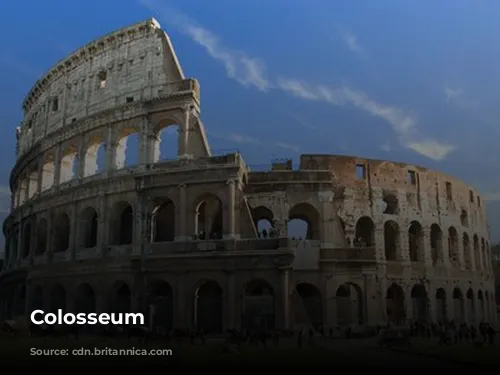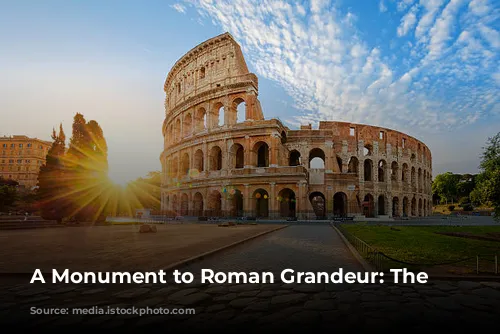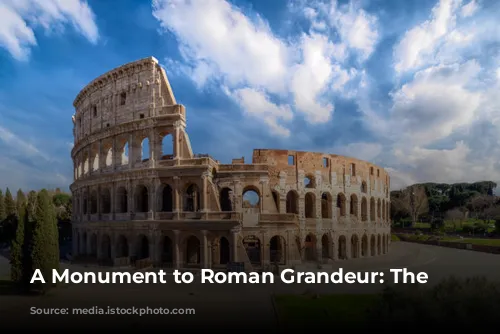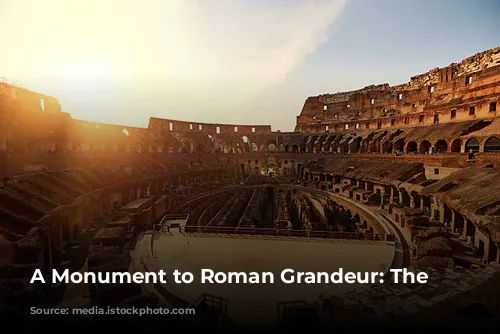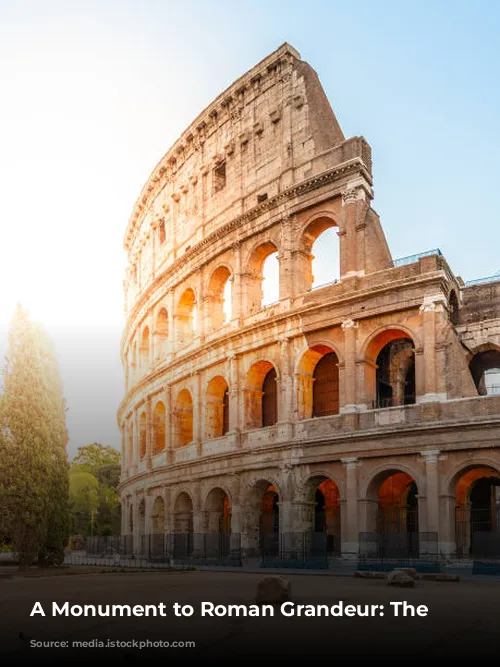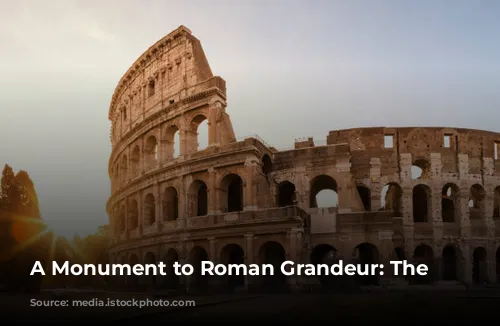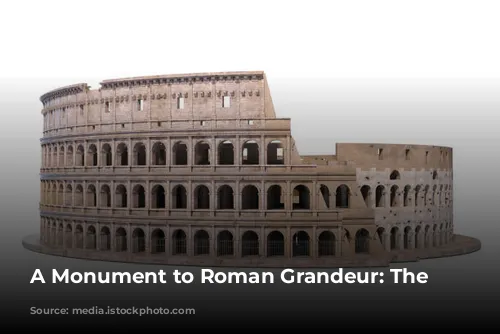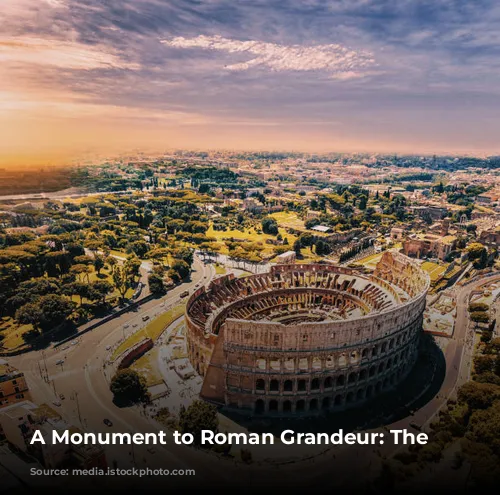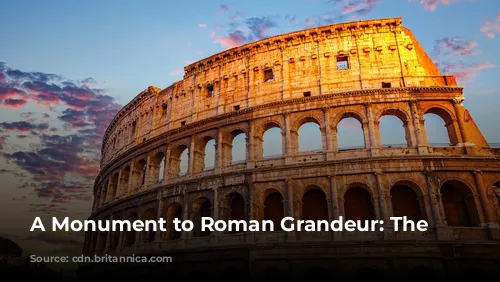The Colosseum, a colossal amphitheater standing tall in the heart of Rome, is a testament to the architectural and engineering brilliance of the Roman Empire. As one of the few structures from that era that remain largely intact, it stands as a proud monument to the past, drawing millions of tourists and generating significant revenue for the Italian government. In 2018 alone, the Colosseum, the Roman Forum, and the Palatine Hill collectively generated over $63.3 million (€53.8 million), making it the most popular tourist attraction in Italy.
A History of Ups and Downs
The Colosseum’s story is as dramatic as the events it witnessed. After the fall of the Western Roman Empire, the once-grand amphitheater fell into a state of disrepair. The Frangipane and Annibaldi families, powerful Roman families of the 12th century, even used it as a fortress, a far cry from its original purpose. In the late 15th century, Pope Alexander VI allowed the Colosseum to be used as a quarry, its precious materials plundered for construction elsewhere. This period of neglect lasted for over a thousand years before state-funded restoration efforts began in the 1990s, breathing new life into the ancient wonder.
A Symbol of Power and Entertainment
The Colosseum’s construction was a monumental endeavor, initiated by Emperor Vespasian in the aftermath of the tumultuous “Year of the Four Emperors” in 69 CE. Like other amphitheaters, the Colosseum was meant to be a hub of entertainment for the Roman populace. It hosted a spectacular array of events, from thrilling gladiator battles and exciting animal hunts to elaborate mock naval battles. These spectacles were a way for emperors to showcase their power and connect with the people, while also providing a much-needed distraction from the realities of daily life.
Built by Force, Standing for Centuries
Construction of the Colosseum commenced under Vespasian’s reign, between 70 and 72 CE. His son and successor, Titus, dedicated the completed structure in 80 CE. The Colosseum’s fourth story was added by Emperor Domitian in 82 CE. Sadly, the Colosseum’s construction was financed with the spoils of war, specifically from Titus’s conquest of Jerusalem in 70 CE, and it was built by enslaved Jews from Judea. Despite this dark origin, the Colosseum stands as a symbol of Roman ingenuity and architectural prowess, its magnificent structure enduring for centuries.
A Colossal Structure, A Colossal Spectacle
The Colosseum is a truly remarkable structure. It is an elliptical arena made of stone, concrete, and tuff, rising to a height of four stories. Measuring 620 by 513 feet (189 by 156 meters), it had the capacity to seat an astounding 50,000 spectators, making it one of the largest amphitheaters ever built. The Colosseum is most famously known for the gladiatorial combat that took place within its walls.
More Than Just a Stage for Combat
Located east of the Palatine Hill, on the site of Nero’s Golden House, the Colosseum was built where once stood an artificial lake, the centerpiece of that extravagant palace. By replacing the former emperor’s private lake with a public amphitheater, Vespasian, whose rise to power was humble compared to Nero’s, was making a symbolic statement. The Colosseum represented a shift from private luxury to public spectacle, a place where the masses could gather and be entertained.
A Masterpiece of Engineering
Unlike earlier amphitheaters, which relied on the natural support of hillsides, the Colosseum is a freestanding structure, built using a complex system of barrel and groin vaults. Its three tiers are adorned with arcades framed by engaged columns, following the Doric, Ionic, and Corinthian orders, a design that influenced Renaissance architecture. The Colosseum’s outer walls are made of travertine, with the secondary walls built of volcanic tufa and the inner bowl and arcade vaults constructed of concrete.
Shielding the Spectators from the Elements
The Colosseum provided its spectators with a comfortable viewing experience. A retractable velarium (awning) offered shade from the sun. This enormous awning was supported by masts extending from corbels built into the Colosseum’s top story, and its manipulation required the skill of hundreds of Roman sailors. Within the arena, the Colosseum witnessed thousands of gladiatorial combats, animal hunts, and even mock naval battles, becoming the center of entertainment for the Roman world.
A Legacy of Change and Preservation
The Colosseum’s history is not simply about its glory days. The arena fell into disrepair during the Middle Ages, repurposed as a church and a fortress. Vandalism and pollution further damaged the structure, and its once-ornate marble seats and decorative materials were stripped away, leaving it a mere quarry for building materials. Yet, the Colosseum’s story is also one of resilience. In the 19th century, efforts to preserve the Colosseum began in earnest, with notable contributions from Pope Pius VIII. Finally, a major restoration project began in the 1990s.
A Timeless Attraction for the World
The Colosseum stands today as one of Rome’s most popular tourist attractions, welcoming close to seven million visitors annually. Its imposing presence continues to inspire awe and wonder, drawing visitors from all corners of the world. The Colosseum remains a powerful symbol of Roman civilization, its grandeur and history transcending the passage of time. Regular exhibitions relating to ancient Roman culture are held at the Colosseum, offering visitors a glimpse into the lives of the people who once lived and died within its walls. The Colosseum, an enduring testament to human ingenuity and the enduring power of history, continues to enchant and captivate, reminding us of the timeless fascination with the grandeur of the past.


